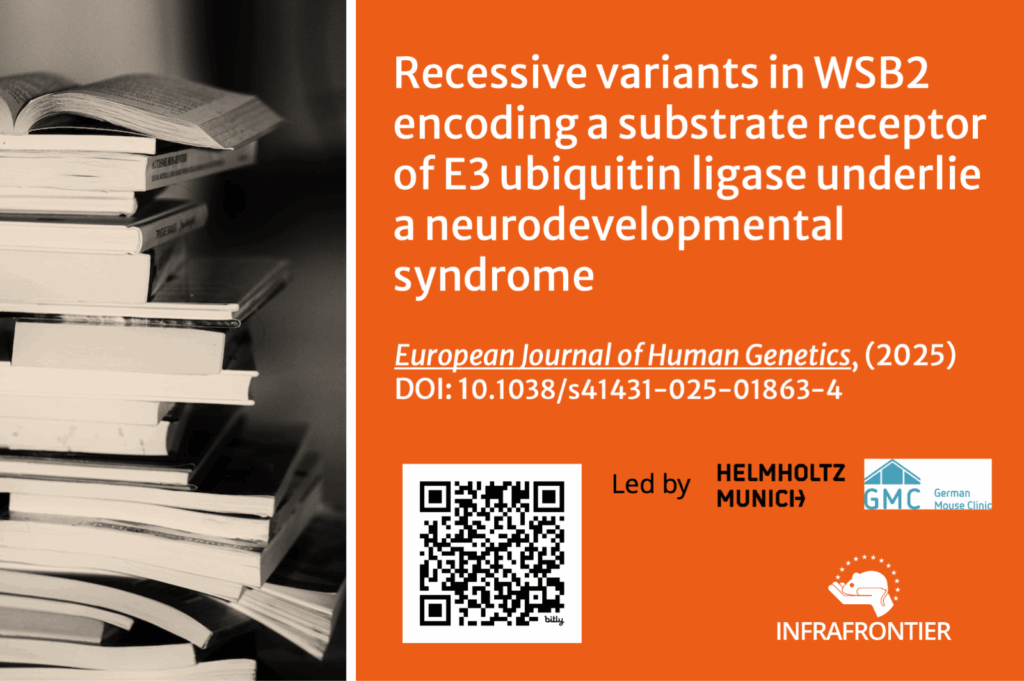Role of WSB2 in a New Type of Neurodevelopmental Syndrome
In a recent study published in the European Journal of Human Genetics (2025), our colleagues at the German Mouse Clinic collaborated with other clinicians and scientists to understand the cause of a new type of neurodevelopmental disorder (NDD). It was associated with extremely rare variants in WSB2, encoding a CRL substrate receptor (SR) of E3 ubiquitin ligase which had never been before linked to a human disease.
Using a global genetic database, the researchers found five patients from four unrelated families. All of them had rare mutations in both copies of the WSB2 gene, inherited from healthy consanguineous parents. The variants were identified through exome or genome sequencing and confirmed by Sanger sequencing. The patients presented with neurodevelopmental delay, dysmorphic features, brain structural abnormalities with or without growth restriction, hypotonia, and microcephaly.
WD40 and SOCS box protein-2 (WSB2), a member of the large family of suppressor of cytokine signaling (SOCS)-box proteins, has recently been identified as a substrate receptor of cullin 5 E3 ligase that plays an important role in proteomic regulation through substrate ubiquitination and proteasomal degradation.
Systemic phenotyping of mice with Wsb2 deficiency revealed several overlapping phenotypes with human patients affecting multiple organ systems. The Wsb2-mutant mice exhibited several neurological findings that included hyperactivity, altered exploration, and hyper alertness. They also weighed less, had a lower heart rate, and presented an abnormal retinal blood vessel morphology and vasculature pattern along with decreased total thickness of the retina.
The findings suggest that homozygous loss of function WSB2 variants cause a new type of neurodevelopmental disorder in humans, supported by similar neurologic and developmental characteristics in Wsb2-mutant mice. This discovery adds WSB2 to the growing list of genes associated with neurodevelopmental disorders and highlights the importance of ubiquitination pathways in brain development. More research is needed to understand exactly how WSB2 works, to elucidate its downstream targets, and the precise mechanisms by which WSB2 mutations contribute to disease pathogenesis.
Original publication:
Luo S, Gailus-Durner V, McGivern B, … Hrabe de Angelis M et al. German Mouse Clinic Consortium Recessive variants in WSB2 encoding a substrate receptor of E3 ubiquitin ligase underlie a neurodevelopmental syndrome. Eur J Hum Genet (2025) DOI: 10.1038/s41431-025-01863-4.
